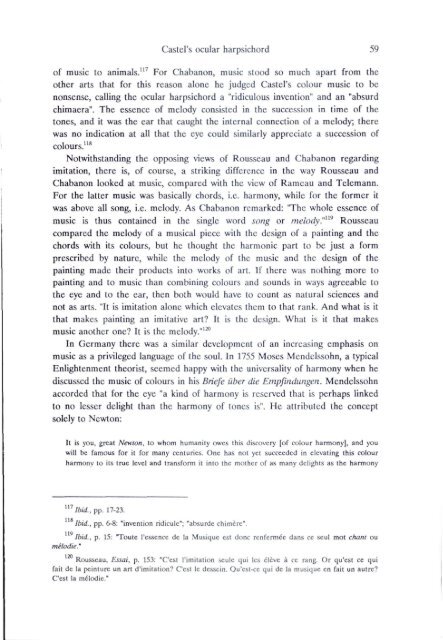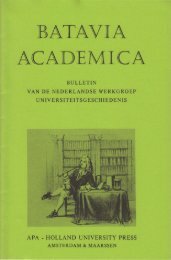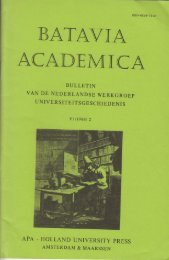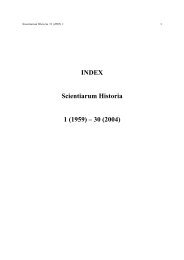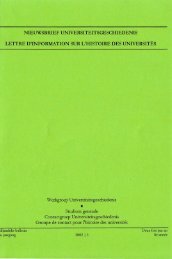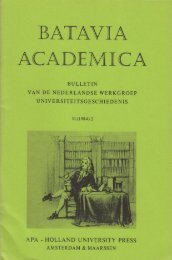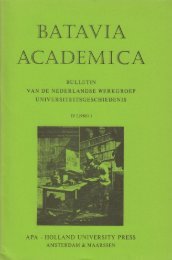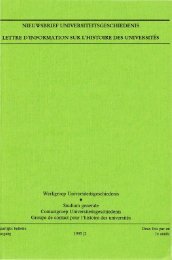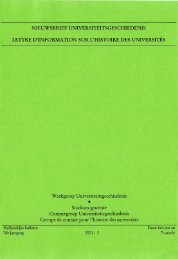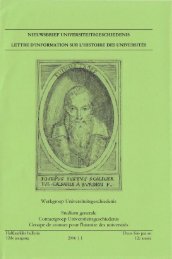the ocular harpsichord of louis-bertrand castel - Gewina
the ocular harpsichord of louis-bertrand castel - Gewina
the ocular harpsichord of louis-bertrand castel - Gewina
You also want an ePaper? Increase the reach of your titles
YUMPU automatically turns print PDFs into web optimized ePapers that Google loves.
Castel's <strong>ocular</strong> <strong>harpsichord</strong> 59<br />
<strong>of</strong> music to animals."^ For Chabanon, music stood so much apart from <strong>the</strong><br />
o<strong>the</strong>r arts that for this reason alone he judged Castel's colour music to be<br />
nonsense, calling <strong>the</strong> <strong>ocular</strong> <strong>harpsichord</strong> a "ridiculous invention" and an "absurd<br />
chimaera". The essence <strong>of</strong> melody consisted in <strong>the</strong> succession in time <strong>of</strong> <strong>the</strong><br />
tones, and it was <strong>the</strong> ear that caught <strong>the</strong> internal connection <strong>of</strong> a melody; <strong>the</strong>re<br />
was no indication at all that <strong>the</strong> eye could similarly appreciate a succession <strong>of</strong><br />
colours."*<br />
Notwithstanding <strong>the</strong> opposing views <strong>of</strong> Rousseau and Chabanon regarding<br />
imitation, <strong>the</strong>re is, <strong>of</strong> course, a striking difference in <strong>the</strong> way Rousseau and<br />
Chabanon looked at music, compared with <strong>the</strong> view <strong>of</strong> Rameau and Telemann.<br />
For <strong>the</strong> latter music was basically chords, i.e. harmony, while for <strong>the</strong> former it<br />
was above all song, i.e. melody. As Chabanon remarked: "The whole essence <strong>of</strong><br />
music is thus contained in <strong>the</strong> single word song or nieiody."^'^ Rousseau<br />
compared <strong>the</strong> melody <strong>of</strong> a musical piece with <strong>the</strong> design <strong>of</strong> a painting and <strong>the</strong><br />
chords with its colours, but he thought <strong>the</strong> harmonic part to be just a form<br />
prescribed by nature, while <strong>the</strong> melody <strong>of</strong> <strong>the</strong> music and <strong>the</strong> design <strong>of</strong> <strong>the</strong><br />
painting made <strong>the</strong>ir products into works <strong>of</strong> art. If <strong>the</strong>re was nothing more to<br />
painting and to music than combining colours and .sounds in ways agreeable to<br />
<strong>the</strong> eye and to <strong>the</strong> ear, <strong>the</strong>n both would have to count as natural sciences and<br />
not as arts. "It is imitation alone which elevates <strong>the</strong>m to that rank. And what is it<br />
that makes painting an imitative art? It is <strong>the</strong> design. What is it that makes<br />
music ano<strong>the</strong>r one? It is <strong>the</strong> melody."'^<br />
In Germany <strong>the</strong>re was a similar development <strong>of</strong> an increasing emphasis on<br />
music as a privileged language <strong>of</strong> <strong>the</strong> soul. In 1755 Moses MendcKssohn, a typical<br />
Enlightenment <strong>the</strong>orist, seemed happy with <strong>the</strong> universality <strong>of</strong> harmony when he<br />
discussed <strong>the</strong> music <strong>of</strong> colours in his Briefe iiber die Empfindungen. Mendelssohn<br />
accorded that for <strong>the</strong> eye "a kind <strong>of</strong> harmony is reserved that is perhaps linked<br />
to no lesser delight than <strong>the</strong> harmony <strong>of</strong> tones is". He attributed <strong>the</strong> concept<br />
solely to Newton:<br />
It is you. great Newton, to whom humanity owes this discovery [<strong>of</strong> colour harmony], and you<br />
will be famous for it for many centuries. One has not yet succeeded in elevating this colour<br />
harmony to its true level and transform it into <strong>the</strong> mo<strong>the</strong>r <strong>of</strong> as many delights as <strong>the</strong> harmony<br />
'"Ibid., pp. 17-23.<br />
118<br />
Ibid., pp. 6-8: "invention ridicule"; 'absurde chimere".<br />
119<br />
Ibid., p. 15: Toute I'essence de la Musique est done renfermee dans ce seul mot chant ou<br />
melodic."<br />
Rousseau, Essai, p. 153: 'C'est I'imitation seule qui les eleve a ce rang. Or qu'est ce qui<br />
fait de la peinture un art d'imitation? C'est le dessein. Qu'est-ce qui de la musique en fait un autre?<br />
C'est la m^lcxlie."


